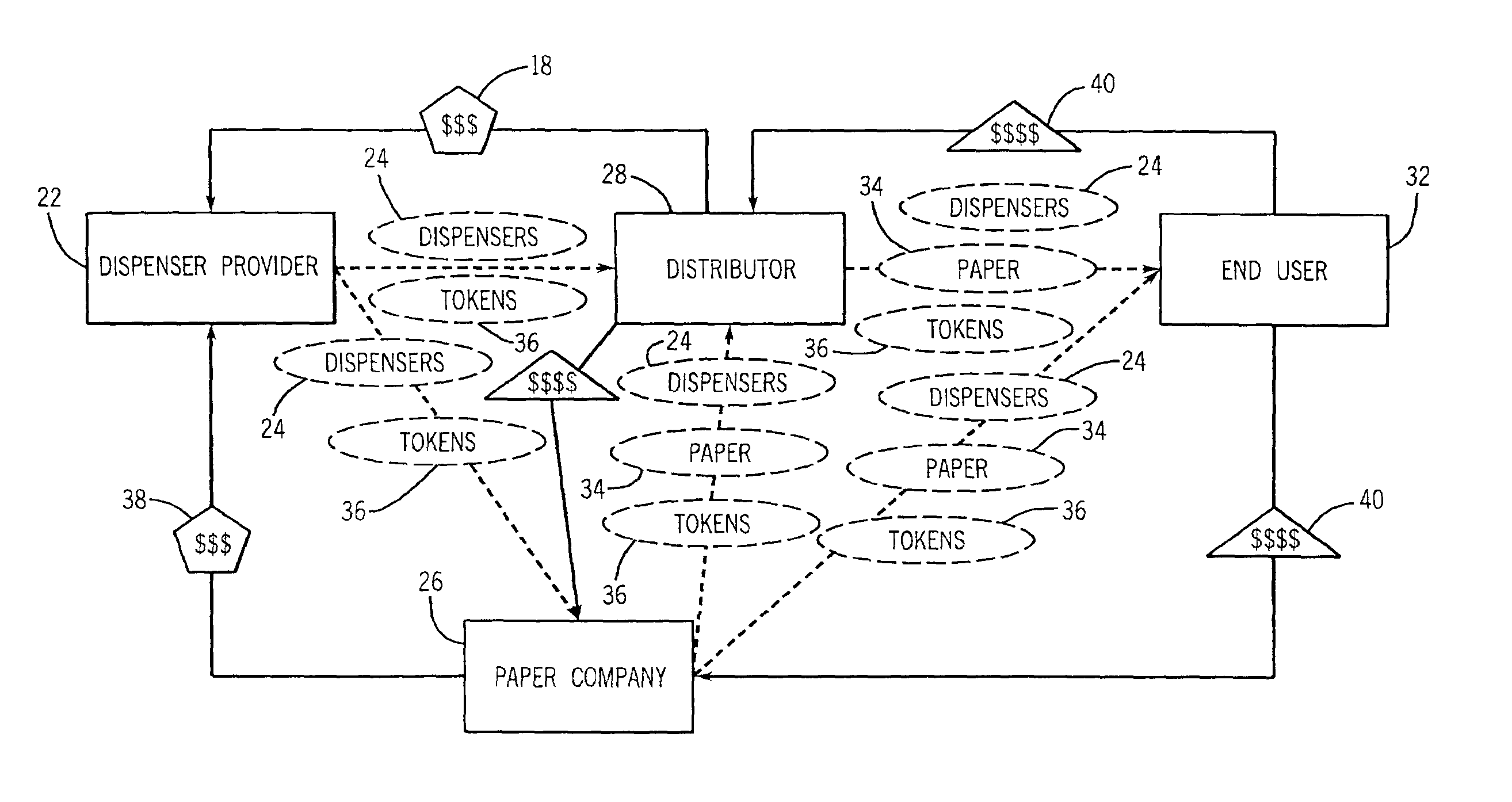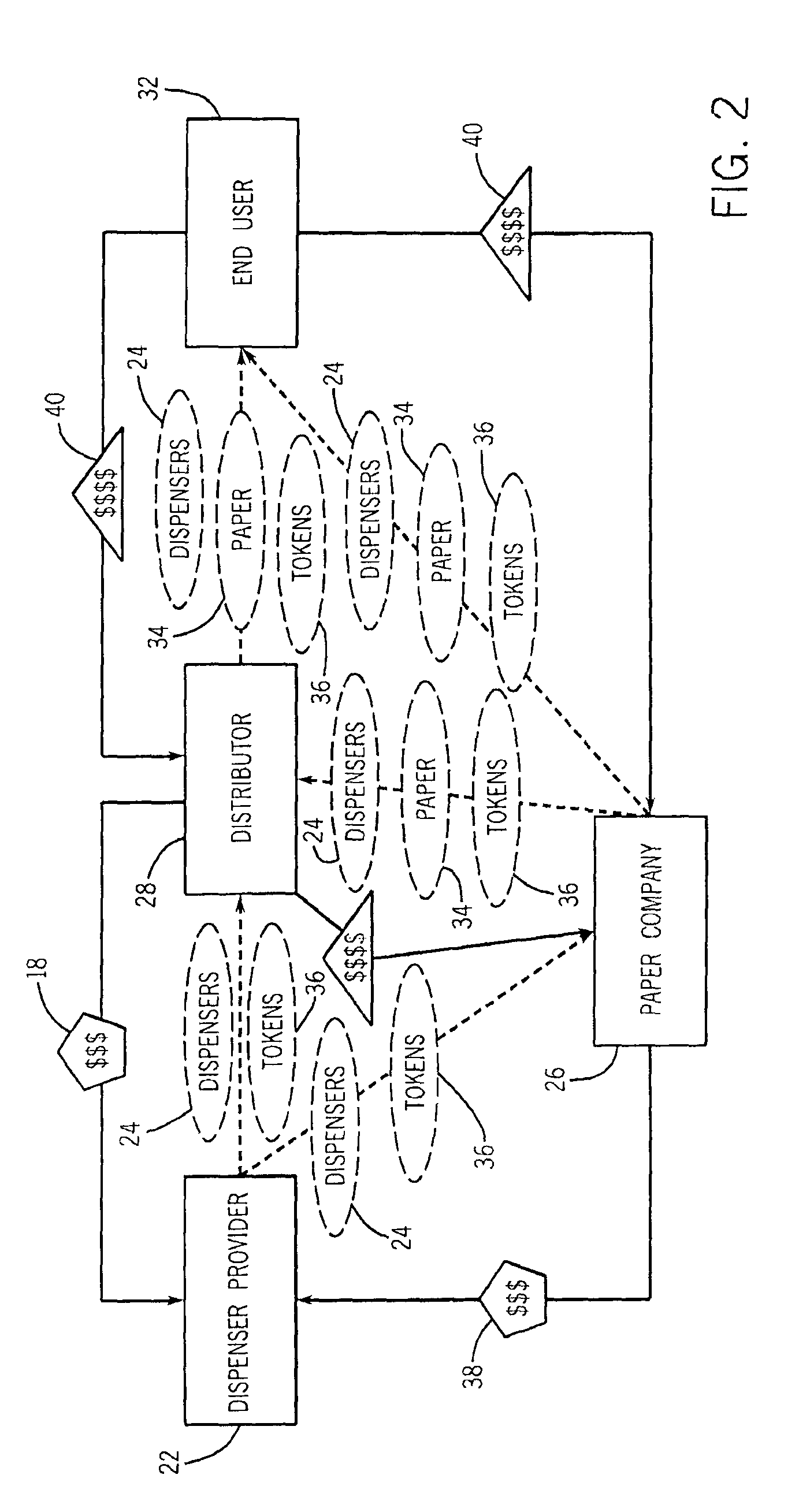Exclusivity system and method
a technology of excluders and dividers, applied in the field of dispensers, can solve the problems of paper providers losing money on the relationship, paper providers in a difficult situation, paper providers losing money (or making insufficient profits), etc., and achieve the effect of significant savings
- Summary
- Abstract
- Description
- Claims
- Application Information
AI Technical Summary
Benefits of technology
Problems solved by technology
Method used
Image
Examples
Embodiment Construction
[0019]The system and method of the present invention changes the paradigm for the provision of dispensers in the consumables marketplace. In accordance with one preferred embodiment of the present invention, a purveyor of automatic roll towel and tissue dispensers—dispensers that feed paper or other web material automatically—provides dispensers to third parties at reduced or no cost to the third party. All such dispensers 2, 4 or 6 are equipped with some means for selective activation to permit them to dispense one or multiple rolls of web material. The means for such selective activation is provided to the user of the dispensers (those persons, organizations or establishments who deploy the dispensers for use and are charged with refilling them) in the discretion of the provider of paper to the user. Typically, the means for activation originates with the maker of the dispensers who then passes the activation means on to a provider of paper, who in turn, passes the activation mean...
PUM
 Login to View More
Login to View More Abstract
Description
Claims
Application Information
 Login to View More
Login to View More - R&D
- Intellectual Property
- Life Sciences
- Materials
- Tech Scout
- Unparalleled Data Quality
- Higher Quality Content
- 60% Fewer Hallucinations
Browse by: Latest US Patents, China's latest patents, Technical Efficacy Thesaurus, Application Domain, Technology Topic, Popular Technical Reports.
© 2025 PatSnap. All rights reserved.Legal|Privacy policy|Modern Slavery Act Transparency Statement|Sitemap|About US| Contact US: help@patsnap.com



